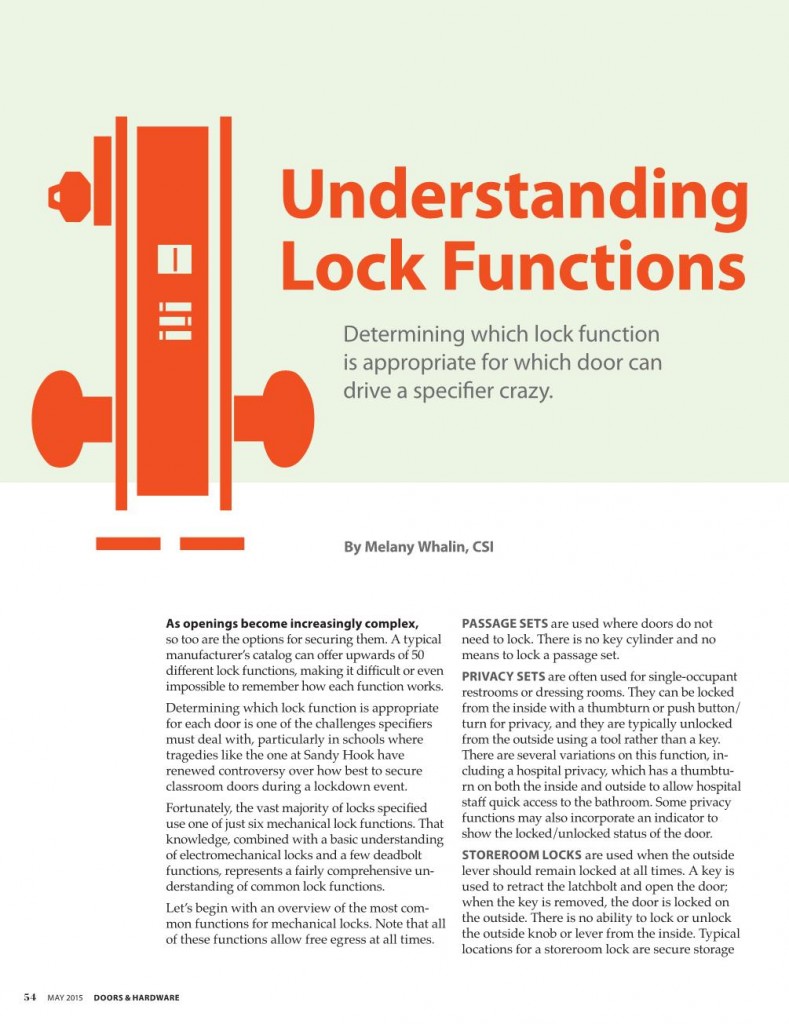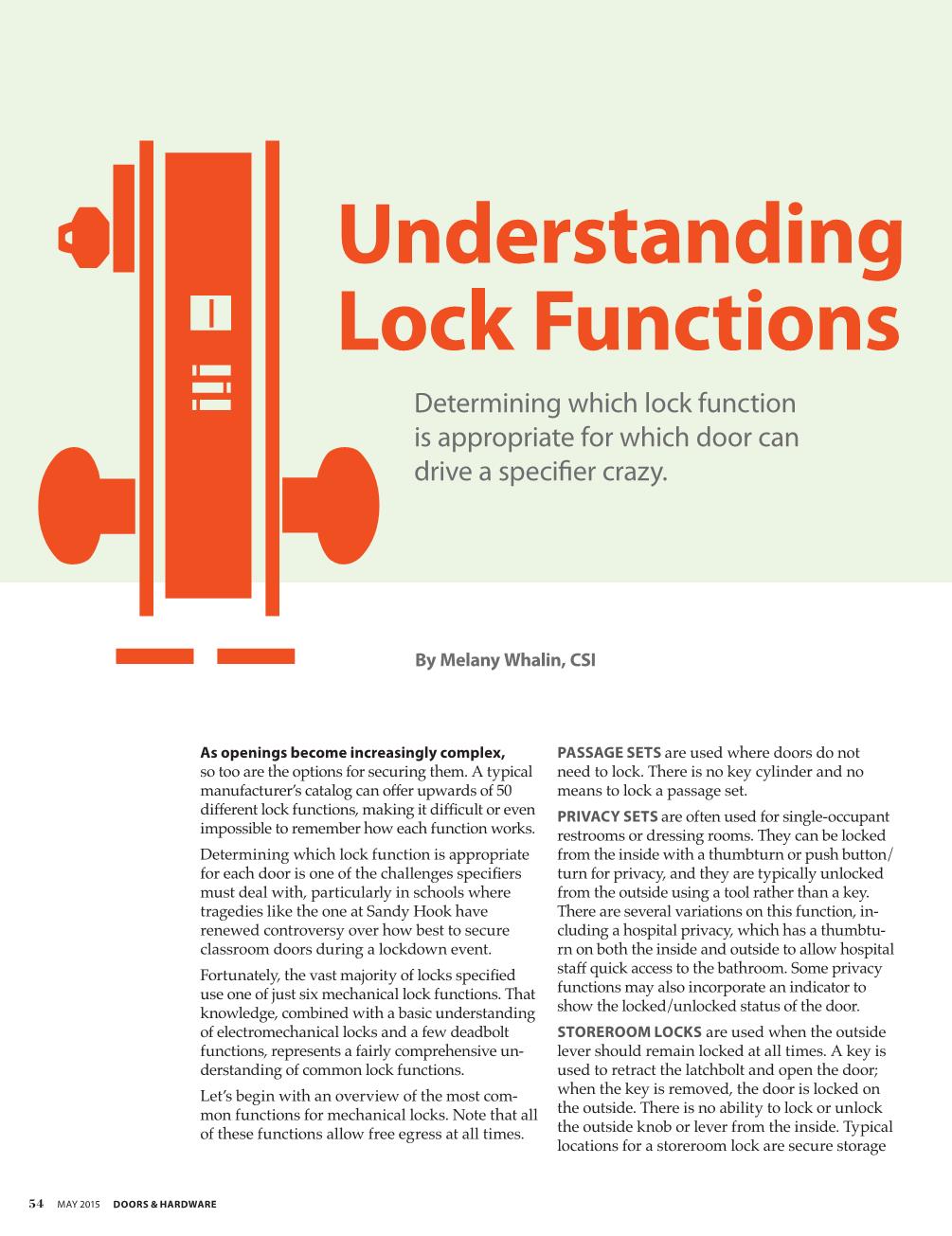 This article, which appears in the May 2015 issue of Doors & Hardware, is a good explanation of lock functions that might be helpful when a school is considering how to address classroom security. I will add this to the list of resources on my Schools tab (above).
This article, which appears in the May 2015 issue of Doors & Hardware, is a good explanation of lock functions that might be helpful when a school is considering how to address classroom security. I will add this to the list of resources on my Schools tab (above).
As openings become increasingly complex, so too are the options for securing them. A typical manufacturer’s catalog can offer upwards of 50 different lock functions, making it difficult or even impossible to remember how each function works.
Determining which lock function is appropriate for each door is one of the challenges specifiers must deal with, particularly in schools where tragedies like the one at Sandy Hook have renewed controversy over how best to secure classroom doors during a lockdown event.
Fortunately, the vast majority of locks specified use one of just six mechanical lock functions. That knowledge, combined with a basic understanding of electromechanical locks and a few deadbolt functions, represents a fairly comprehensive understanding of common lock functions.
Let’s begin with an overview of the most common functions for mechanical locks. Note that all of these functions allow free egress at all times.
Click here to open the PDF and continue reading this article.
You need to login or register to bookmark/favorite this content.






Not that I’m trying to put ideas in your head, but lock functions would be a great topic for one of those “whiteboard” videos.
Done! http://idighardware.com/2015/03/lock-functions-video/
There is another one in progress that is specific to classroom locking.